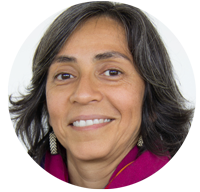Experts explain the fires and the climate behind them. Dr. Thomas Lovejoy leads us into the recent burst of fires in the Amazon. We get a report from Brazilian scientists. From the U. of Alaska, Brian Brettschneider on crazy record-high temperatures up north, the smoke, and the prospects of wildfires from the Boreal forest right up into the Tundra. Sorry, it’s more bad news from the real world – here on Radio Ecoshock.
Listen to or download this Radio Ecoshock show in CD Quality (57 MB) or Lo-Fi (14 MB)
Despite what you’ve heard about farmers just burning slash, the massive Amazon fires this year are from surging deforestation there. It is the return of a world-damaging process that releases more greenhouse gases, reduces the cooling power of plants, while threatening the lives of indigenous people and all the marvelous creatures of the rainforest. We will tour with one of the world’s greatest experts on the Amazon: Dr. Thomas Lovejoy. I will add notes from a webinar I attended last week with Brazilian scientists and Woods Hole.
Then we travel to the other end of the Earth. From the University of Alaska, Brian Brettschneider reports on crazy record high temperatures up north, the choking smog, and the prospects of wildfires from the Boreal forest right up into the Tundra. From the Amazon to Alaska, forests burned this summer, changing the landscape and your climate. I’m Alex Smith and this is Radio Ecoshock.
FROM THE AMAZON MASTER SCIENTIST: THOMAS LOVEJOY
Satellite shots of the treasured Brazilian Amazon reveal a mass of fire and smoke this year. It is heart breaking. No scientist knows the Amazon better than our guest Dr. Thomas Lovejoy. Thomas won awards, appeared in nature documentaries and advised three Presidents. He is the father of “biological diversity” and helped found conservation biology.

Dr. Thomas Lovejoy
Listen to or download this 22 minute interview with Thomas Lovejoy in CD Quality or Lo-Fi
Europeans just threatened to withhold a trade deal unless action is taken by Brazil’s government against Amazon fires. Journalist David Wallace-Wells says it was, quote “a threat to apply the same tools of leverage and sanction and shame to crimes of climate as have been applied in the past to violations of human rights and territorial sovereignty.” There is some promise there of nation-to-nation action to prevent the worst abuses of the environment.
But David Wallace Wells (a popular guest on Radio Ecoshock last spring) says most of the burning land was already cleared and there are more fires right now in Angola and Congo….
WHY ARE MAINSTREAM MEDIA DOWNPLAYING THE AMAZON FIRE DISASTER THIS YEAR?
Julie Turkewitz in the New York Times questions the seriousness of this year’s fires in the Amazon. The argument goes it is mostly farmers and loggers burning slash in Brazil. They are not destroying virgin rainforest. But that kind of original forest IS burning in Africa’s Angola and the Congo, with no big uproar. Perhaps we should look there instead.
Turkewitz adds:
“Data analyzed by Global Forest Watch show that Angola ranks first in the number of fire alerts by province right now, while Brazil ranks second, with Zambia and the Democratic Republic of Congo in third and fourth place.”
Here is another attempt to cool the flames of concern about Amazon fires. News media emphasized the Amazon as the “lungs of the planet”. A few scientists explain that humans will not run short of oxygen. Somehow that doesn’t make me feel better about the destruction of nature in the heart of South America. Can we be concerned enough?
There was some good reporting. Lovejoy has been quoted everywhere on these fires, from National Geographic to the Guardian.
Science is under threat in many countries, including the United States and Australia. Canadian climate science has not yet recovered after a ten year attack on funding climate research by then Prime Minister Stephen Harper. Lovejoy says the science budget in Brazil has been cut in half, but some Amazon research continues due to funding from other sources. International scientists specializing in the Amazon are coping with the new Bolsinaro government, but it’s not good.
I ask Thomas as he heads for 80 years on this planet, what is the plan? Do he hope to work your field until the end, certain projects to complete, or is retirement really an option for him? Lovejoy says “retirement” is not a word in his dictionary. He has three books still to finish.
Here are a few quick facts from the Lovejoy interview:
* 50% of Brazilian Amazon – and whole Amazon – are in conservation areas or demarcated indigenous reserves
* the Amazon is equivalent in size in area to lower 48 states in the U.S.
* the hydrological cycle allows the rainforest to generate 50% of its own rainfall – but that could be jeopardized by forest reduction. This is key to a possible tipping point where the great forest converts to savanna (grass lands).
* Carlos Nobre estimated where that tipping point might be: when 20 to 25% of the forest is cut down. We are approaching 20% gone now.
* the historic droughts of 2005, 2010, 2015-16 are signals of that tipping point
* the rainforest does not burn naturally (even with lightning)
* watch out that the biodiversity crisis does not get lost in climate change debate
* the amount of carbon in the atmosphere from destroyed and degraded nature is roughly equal to what remains in extant nature
Thomas Lovejoy previously appeared on Radio Ecoshock on February 13, 2013
That previous Lovejoy interview (18 minutes) is available in CD Quality or Lo-Fi
NOTES FROM THE WOODS HOLE/IPAM SEMINAR ON THE BIG AMAZON FIRES
We can add more perspective on the Amazon fires from Brazilian and American scientists. On September 5th I attended an online seminar hosted by the Woods Hole Research Center. Their scientist Dr. Michael Coe said “All most all of the carbon stored on land is in forests [what about the soil!] and the Amazon is one half of the tropical rainforests on the planet. The equivalent of 10 years of global carbon emissions are stored in the Amazon.”
You can watch a video of that seminar here: September 5, 2019 “Amazon Fires: Science & Solutions”. The audio was not good enough for radio broadcast, so I summarized the main points as I see them.
Forests also remove carbon from the atmosphere. Quoting Michael Coe: “Something like 30% of all carbon being emitted by humans on the planet is being pulled out by forests, and most of that is in the tropics, and again the Amazon is half of that.”
“Two thirds of all sunlight and rainfall are converted back to water vapor by tropical forests. That process cools the land surface. If you remove the forest it heats up immediately – something like 5 degrees C or 10 degrees Fahrenheit. If you remove a chunk of land in the Amazon today, tomorrow it’s 10 degrees F. warmer.”
The forest also creates rainfall which affects lands thousands of miles away, and is a mainstay for agriculture (and feeding people).
Coe says about 7,000 square kilometers of land were deforested in Brazil this season. That is about twice the size of Rhode Island. Coe estimates about 140 million metric tonnes of CO2 will be emitted into the atmosphere from these fires.
ARE THESE NATURAL WILDFIRES IN THE AMAZON?
The Brazilian rainforest is not adapted to fire, as some forests are on the West Coast of North America. The Amazon seldom burns from natural causes – it is just too wet. So where does this new burst of fire come from?

Dr. Ane Alencar
Dr. Ane Alencar is an experienced Brazilian scientist working with IPAM-Amazonia. She reports as follows:
“This year we had a peak in fires in mid-August and that is very uncommon.” The only other mid-August peak they have seen was in 2010 during the big drought. But this was not a year of drought. In early July there was a report of a spike of deforestation – pointed out by the Brazilian National Institute for Space Research (INPE). They issued deforestation alerts showing a big increase from last year. That caused a lot of commotion in Brazil and beyond. Dr. Alencar says that was really a prediction of more fires later in August as the log piles dried enough to be burned, which happened and the world saw the smoke from satellite. Their team investigated comparing the areas of deforestation and the later hot spots (fires). They double-checked the number of days without rain and that was not the cause.
“Deforestation is increasing in the Amazon maybe taking us to the rates we had in the 1990’s and the beginning of 2000’s. This is a little bit scary… that we come back to that, we get the rates [of deforestation] that we had 20 years ago.”
So when the New York Times and others try to say these fires are not burning the rainforest, being just logging slash – that is technically true but where did those piles of logs come from? The Brazilian Space Agency says they came from cutting down the rainforest a couple of months earlier.
Michael Coe discounts media discussion of Amazon as “lungs of the Earth” and oxygen production. This is a distraction from the real issues of the amount of carbon dioxide now being released from deforestation and burning, and the changes on the ground for local climate and biodiversity loss.
The other Brazilian scientist on the panel, Paulo Brando, just testified about the fires to the Brazilian Congress on September 4th. Brando says, quote: “When you look at what is happening in Brazil right now, the Amazon is connected into the global markets. What is happening in the Amazon is influenced by buyers in China, Europe. Brazil and the U.S. compete for the biggest markets for soybeans for example. So if someone stops buying grain from the U.S. [and I’ll just note China just cut back soy purchases due to Trump tariffs] then we see the impact in the Amazon.” Dr. Brando thinks international markets and agreements could help reduce deforestation by demanding that as part of trade agreements.
Ane Alencar adds: “around 50% of our emissions – our Brazil national emissions – are directly related to deforestation and land use change. The other 20% is related to agriculture.” So most of Brazil’s emissions do not come directly from fossil fuel use like transportation or industry. Brazil is the seventh largest emitter of greenhouse gases in the world she says. Their only meaningful contribution to mitigate climate change is to halt deforestation and green their agricultural operations – rather than closing down coal plants or going to electric cars.
On September 4th, IPAM released a briefing paper on where the fires are occurring. They found, by analyzing hot spots, that one third of the fires happened on publicly owned land, with no designated tenure. That means deforestation that is illegal. People are cutting the trees in order to “grab this area – this is land-grabbing, land speculation.” The only way to straighten that out, Alencar says, is with a police force.
The Brazilian government sent in troops and declared a 60 day ban on setting new fires in the Amazon. That may not stop illegal clearing and logging, and the logs can sit a little longer before the next round of big fires appear on the satellite photos.
In the seminar, I asked about a tipping point for the Amazon. Both Woods Hole and the Brazilian scientists agreed that was a real possibility – perhaps not for the whole Amazon. They foresee a march of the southern grasslands deeper and deeper into the former rainforest of the world.
A Woods Hole press release on August 30 says:
“The Amazon forests hold an enormous amount of carbon – equivalent to 10 years worth of global emissions.
Research with IPAM Amazonia, our longstanding partner in Brazil, shows that the large number of fires this year is a result of deforestation, and that the 2019 fires have so far emitted between 104 and 141 million metric tons of carbon dioxide to the atmosphere. That number is roughly equivalent to the annual CO2 emissions from the entire state of North Carolina.”
My thanks to the Woods Hole Research Center for hosting getting the real facts out there about the fire emergency in the Amazon.
PAUL BECKWITH ON AMAZON FIRES AS TIPPING POINT
“Amazon Rainforest as a Significant but Highly Vulnerable Global Climate Tipping Element” Published on Aug 27, 2019 is one of a two-part series on the Amazon fires. Paul’s videos are stuffed with facts, graphics and insight. His second video on the Amazon is here: “Amazon Rainforest: Crunching the Numbers“.
——————————————————————————————————–
BRIAN BRETTSCHNEIDER REPORTS: THE RED-HOT SUMMER IN ALASKA
How did cold Alaska become the hot smoky place? That was summer 2019 with record-shattering heat, a pocket of drought, and smoke that choked out Anchorage and Fairbanks. Is a new climate emerging in the far north?
Brian Brettschneider is a climatologist and researcher at the International Arctic Research Center, University of Alaska Fairbanks. You will find Brian’s quotes in Forbes or CNN. He just lived through all that wildfire smoke.

Meteorologist and climatologist Brian Brettschneider
In two previous years, just south of Alaska – British Columbia declared a fire State of Emergency. Summer became a threatening season with an evacuation kit near the door. For a couple of weeks we couldn’t breath outside, and stayed in the house with windows shut in hot weather. This year all that and more came to Alaska. They got heat never seen before (ever) plus terrible smoke in the two main cities of Anchorage and Fairbanks.
Listen to or download this 30 minute interview with Brian Brettschneider in CD Quality or Lo-Fi
From his Twitter account @Climatologist49, On September 2, Brian tweeted:
“Summer 2019 temperature departure from normal in Alaska (June-August). It is a near certainty that Alaska will finish with the 2nd warmest summer on record statewide (2004) and the warmest for about 1/2 of the state. ”
Here is another Tweet, from his feed that I am now following: “Looking at old climate forms for Anchorage, nothing appears to come close to the persistent smoke that has been present for the last several months in 2019. Although, back in June 1937, the city almost burned down….Today is day 25 (in the last 66 days) with smoke significantly reducing visibility in Anchorage .”
From the U.S. government web site we see this about how crazy it was in Alaska this summer:
“Alaska has just come to the end of a period of warmth that re-wrote the record books for multiple cities and communities across the state. And crazy enough, it was one of several jaw dropping climate events taking place across our largest state.”
At climate.gov Tom Di Liberto writes:
“Starting on the Fourth of July and lasting multiple days, temperatures across Alaska were 20 to 30 degrees above average in some locations. On July 4, all-time high temperature records were set in Kenai, Palmer, King Salmon, and Anchorage International Airport. The airport reached an astounding, for Alaska, 90°F, breaking the previous all-time record by 5°F! The average temperature in Anchorage during summer is normally in the mid-sixties. Anchorage, Talkeetna (which saw a July record daily high of 93°F), and King Salmon also observed their warmest week on record.
And the anomalous Arctic heat has not been short-lived. Through July 10, Juneau saw the high temperature reach at least 70°F for a record 17 consecutive days. In Anchorage, the highs have reached 80°F for a record six consecutive days, doubling the previous record. And three of those days broke or tied the previous all-time record! The average high temperature from June 27 through July 8 was nearly 81°F, 5.5°F higher than the previous 12-day record. There’s out of the ordinary, and then there is what has been happening in Alaska.”
THE ROLE OF CLIMATE CHANGE IN ALASKAN FIRES
In 2016 Brian Brettschneider co-authored a paper “An assessment of the role of anthropogenic climate change in the Alaska fire season of 2015″. That was right on target for what is happening now. We talk about what made the year 2015 a real turning point for the American Arctic.
Is it coincidence that Siberia experienced major wildfires in the same summer as Alaska? It sounds like science-fiction, but I wonder if we could see years where northern forests around the world burn – hemispheric fires in this age of global warming.
That paper by Brettschneider et al concludes
“that climate change has increased the risk of a fire year as severe as 2015 by 34%–60%.”
THAT’S IT
That’s it for Radio Ecoshock this week. It took me almost a week of research to look into these fires and to prepare for these interviews. If you are able, please help support me in this work with your donation of any amount, or a monthly subscription. You can do that quickly here.
I totally value all the tips and support coming in from listeners around the world. Let’s all keep on going.
Alex